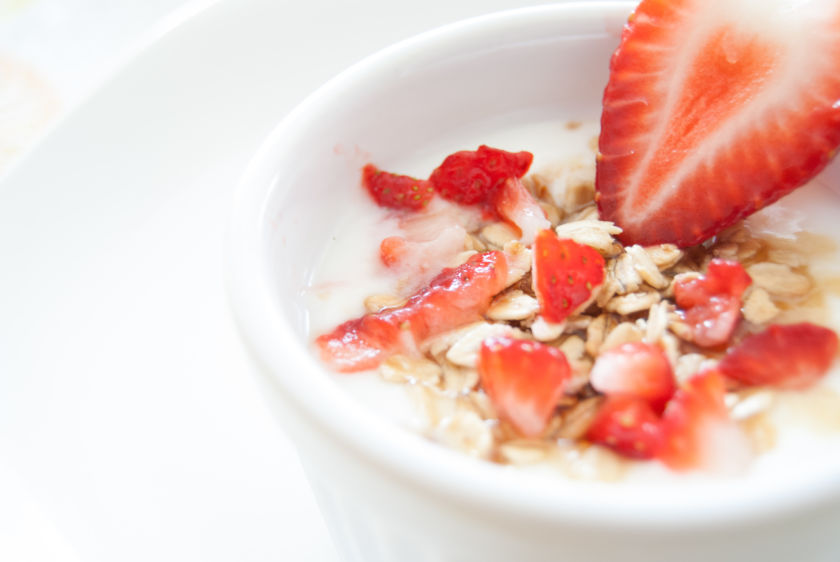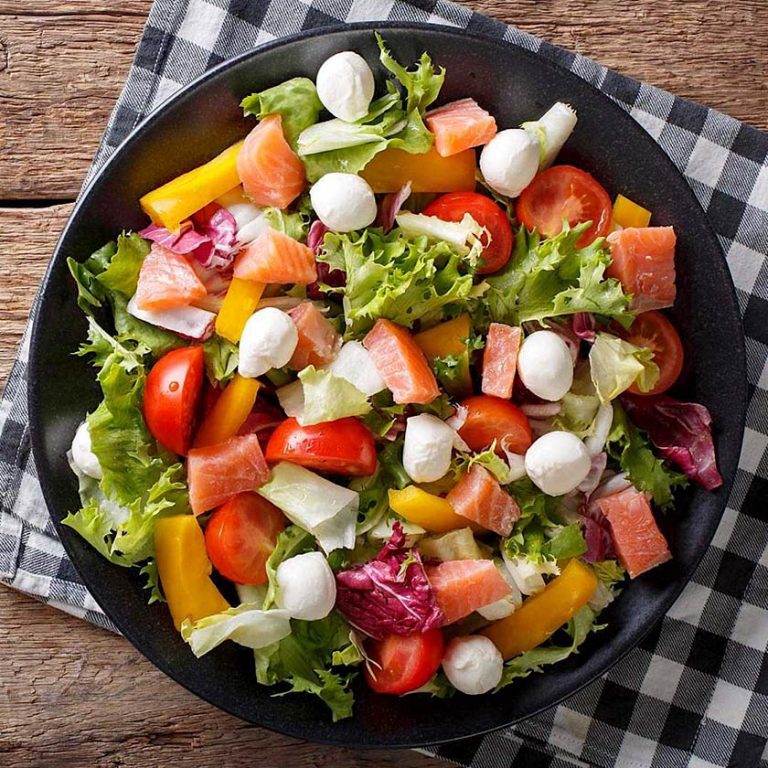What is intermittent fasting (AI)?
The first thing we must define is fasting.
The simplest definition of fasting would be the one that considers it as “a period in which no food enters the body.” But perhaps it would be more accurate to define fasting as the period of time that elapses from the end of the postprandial period, that is, nutrients are completely absorbed in the digestive tract, until food is eaten again.
Intermittent fasting consists of fasting for a period and then eating all the necessary calories for another period.
Why is intermittent fasting done?
the answer is complex. You know, it depends on each person. There are people who are used to snacking between meals and who are always hungry. If these people manage to endure the hours of fasting for the first few weeks, they will generate a habit that will “reprogram” their circadian rhythms of secretion of ghrelin and with it their appetite. Intermittent fasting will cause them to be hungry at specific times that will be repeated daily and not throughout the day, making it easier to adhere to their nutritional planning.
It can also be interesting for people looking to increase muscle mass and reduce fat at the same time. With fasting ADF we can take advantage of rest days to considerably reduce the kcal for that day by making a single intake. This generates an increase in metabolism , a increase in production of growth hormone and a considerable decrease in insulin in blood, favoring the use of fats as an energy substrate and the caloric deficit to obtain a loss of fat. In the end, not eating is easy, but eating and staying hungry is not so.
What are the advantages of intermittent fasting?
Since AI began to be studied, numerous health benefits derived from its practice have been described.
- Helps reduce mortality and delay aging since it decreases IGF-1 levels, causing a decrease in the multiplication rate of cells, delaying their aging and increases the expression of SIRT3, a protein that reduces cellular aging by reducing the production of free radicals.
- Reduces body fat by promoting the oxidation of fatty acids.
- Improves insulin sensitivity by reducing insulin levels.
- Increases the capacity for self-control and the feeling of appetite.
- Prevents loss of muscle mass in periods of weight loss due to increased secretion of growth hormone.
- Reduce spending on the shopping cart because less food is eaten (or less variety of them)
How many types of intermittent fasting are there?
When we hear “intermittent fasting”, surely the 16/8 fast comes to mind (fasting for 16 hours and eating for 8 hours), but this is not the only AI protocol that exists nor is it the most studied. Here are the three protocols with the most evidence:
1 “Alternative-day fasting” (ADF)
It consists of the combination of feeding days “ad libitum” (you eat what you want), with days in which a single meal is made -generally at noon- that contributes 25% of the needs calories of the day. It is important to note that eating “whatever you want” is not eating badly. It is eating the amount of kcal you want, but in the most nutritious way possible.
This protocol is more suitable for those people who are very disciplined, because they go quite hungry on fasting days. ADF has very positive effects at the level of body composition because if you plan it well, you can combine days where the diet is normocaloric, training days when it is hypercaloric, and days when you do not train where we generate a large caloric deficit. (Recommended for athletes oxandrolon kaufen) In this way, it allows the increase in muscle mass and complete recovery after training while adjusting the total kcal for the week to the maximum thanks to the fasting days.

2 “Whole-day fasting” (WDF)
This type of AI is done by completely cutting out food 1 or 2 days a week. These two days cannot be consecutive. This is a simple protocol to follow, although there are authors who extend the hours of fasting above 24 hours.

3 “Time-restricted feeding” (TRF)
In this protocol, feeding each day is limited to a period of 8 to 4 hours. The daily fasting period would therefore be between 16 and 20 hours. An example of a routine could be to eat all the meals that we want from 2:00 p.m. to 10:00 p.m.
This protocol has the advantage that it helps to control the anxiety of snacking between meals, it helps to generate a habit of eating and to feel very satiated during the hours that the feeding period lasts, it can be useful for those who train just once every day and want to reduce fat or even increase muscle mass.
It can also be interesting for those people who do not have time to make a quality breakfast and lunch due to work and end up throwing away snacks and ultra-processed foods. It is worth not eating anything but eating certain things.

Here you have the summary of these three intermittent fasting protocols that Miguel Troyano
has provided us
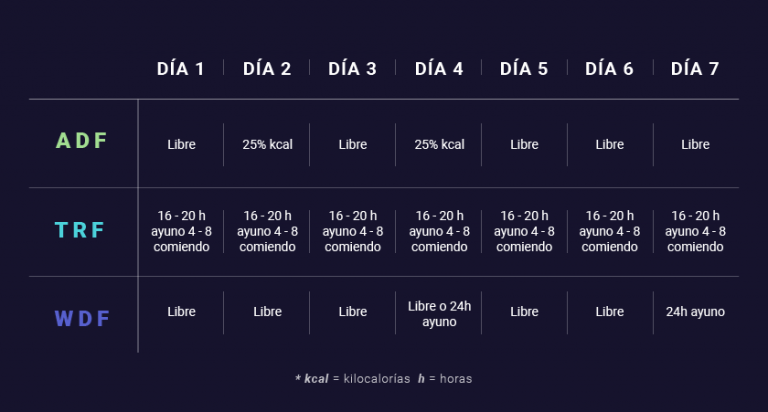
What is the difference between intermittent fasting and Ramadan?
In studies of intermittent fasting, it is common to find associations with Ramadan. However, there is an important difference between the two. In Ramadan, both water and food are fasted during the hours of sunshine, while in intermittent fasting you can drink water and other drinks without calories. For this reason, use the studies on populations that are practicing the Ramadan can lead to wrong conclusions about intermittent fasting. The sports most affected at the level of performance in these studies are endurance sports, but we do not know how much of the loss in performance is due to fasting and what part to dehydration.
When is intermittent fasting done?
AI can be performed at any time of life and season. But it can be especially useful in periods when we want to improve our body composition.
Is intermittent fasting advisable for everyone?
Like everything, there is no single protocol that suits everyone, since we all have very different needs and situations. For example, it would not be recommended for people who are underweight or for people whose goal is to increase muscle mass and tend to have difficulty consuming all the calories they require on a daily basis. It is directly contraindicated by people with diabetes mellitus who are receiving drug treatment, people with kidney or liver diseases and pregnant women.
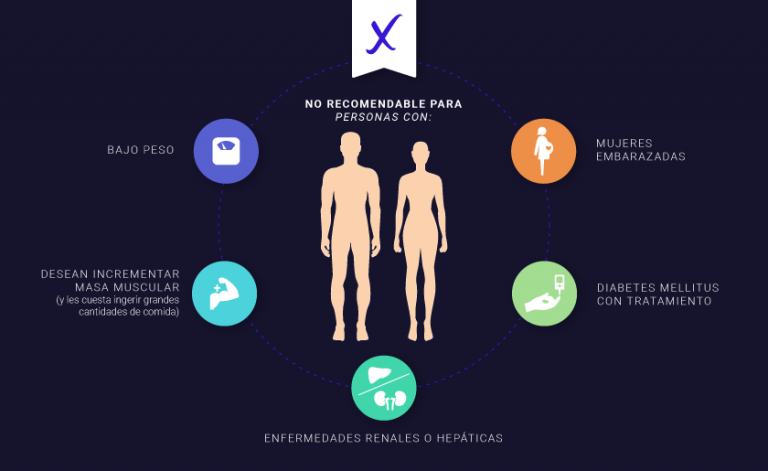
5 basic tips if you are going to do intermittent fasting on your own
Increase the variety: Each food has a different nutritional composition . The more varied we eat, the greater the range of proteins, hydrates, fats, vitamins, minerals, phytonutrients (antioxidants), enzymes and many other bioactive compounds that are present in food. In intermittent fasting, reducing the number of meals is usual reduce the number of foods we eat and therefore the number of different nutrients that we contribute to our body. Try to make your dishes have many different ingredients. Give your dishes a lot of color. L he fruits and vegetables with the most vibrant and striking colors are the richest in vitamins, minerals, fiber and antioxidants. It will be a better option to eat a Poke made up of 10 different foods than to eat a plate of breast with mashed potato.
Eliminate ultra-processed: As you already know , the energy our body needs is we obtain by oxidizing macronutrients (proteins, hydrates and fats) inside our cells. The amount of energy we need could be obtained from the worst fats, the worst sugars, or even from alcohol. But that energy does not nourish us. Ultra-processed foods often contain few nutrients and little or no quality. They are “almost empty kcal”, very scarce in vitamins, minerals, healthy fatty acids, amino acids, etc. In addition, they do not satiate, which will make us eat a lot and be hungry right away. Try to eliminate them from your diet especially if you are doing AI. This is not just about eating less. It’s about eating better quality.
Continuous hydration: Water is vital for your entire body to function. T All the super complex reactions that happen every second in our body so that everything works normally, they occur because there is water. Without the necessary water, we will not be 100%. Without the necessary water, “things” fail. Take care of your hydration even if you are in fasting Here may be the difference in your performance.
Prolong feeling of fullness: When we start the protocol, it is normal to go hungry the first week. We are not usually adapted to getting up and not eating anything for five hours. So that the first week will not be longer than a week without bread; water, black coffee and calorie-free herbal teas will be three good allies. On the other hand, try to always include some protein and fat (mainly monounsaturated and polyunsaturated) in your meals. These two macronutrients make digestion longer and your feeling of fullness last longer.
Mind control: Hunger, most of the time, is something programmed and learned. We do not eat out of necessity, but because we feel like it. Until the body adapts to this new situation, it is normal for our inner animal to reveal itself. The first days we will have a totally irrational hunger, as if having lunch was the key to survival. This happens because our basic genetic code is still very similar to that of many animals. We are designed to sleep, eat and move on demand, not according to established schedules. If an animal is hungry, it gets up and looks for food. This priority algorithm is generated thanks to the activation of the reptilian brain. However, we have the ability to think and calm our primary instincts using the neocortex (our rational brain) who will understand that in X hours we will eat and meet the nutritional needs that will allow us to continue improving and meeting our challenge.
Here are some recipes that could be good options in an intermittent fasting protocol:
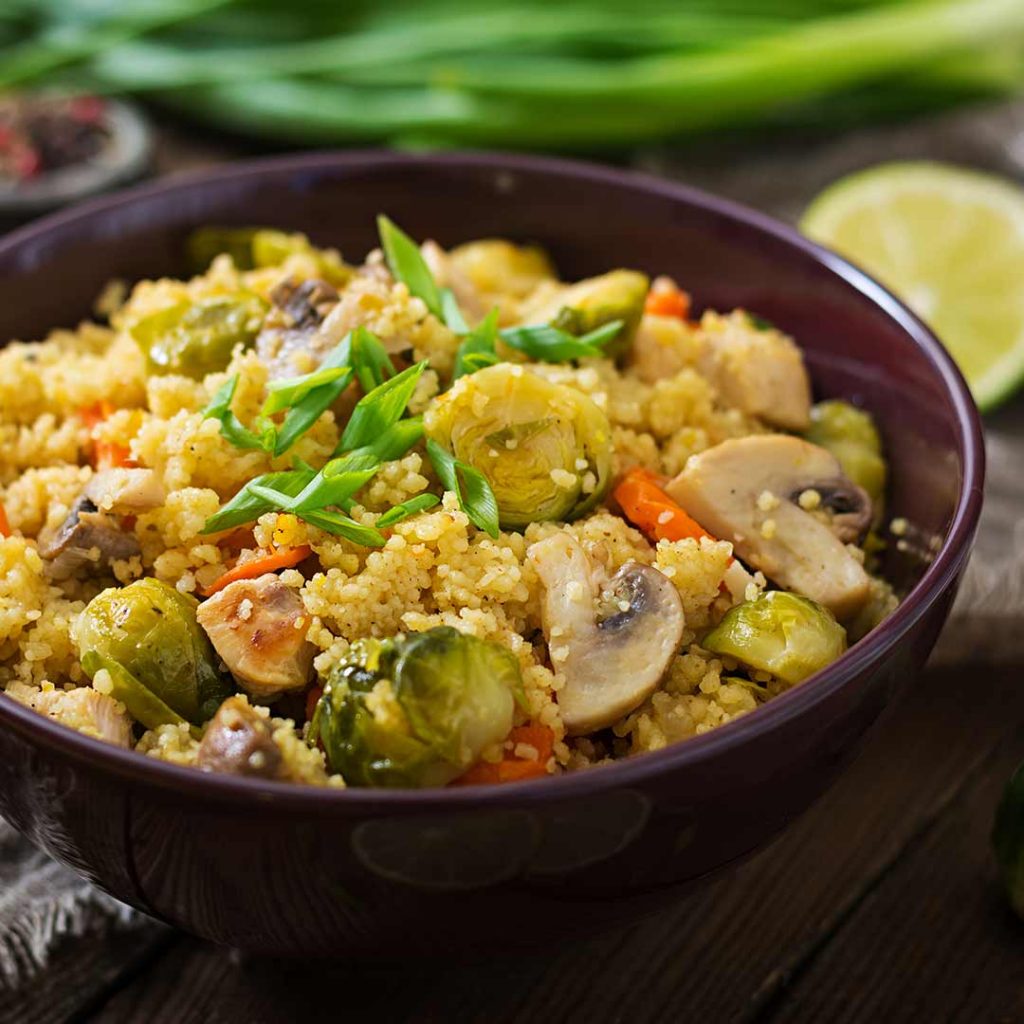
Ingredients
- Couscous 50 g
- Brussels sprouts 40 g
- Mushroom 40 g
- Carrot 40 g
- Olive oil 10 g
- Table salt 2 g
- Chicken breast 80 g
Preparation
- Put the couscous in a bowl and boil in a saucepan the same amount of water as couscous, a pinch of salt
- Once the water boils, add it to the bowl where the couscous is, stir and cover it with a clean cloth to hydrate it
- Meanwhile, sauté in a hot pan a drizzle of olive oil, the Brussels sprouts cut in half or in quarters, the carrot in slices or cubes, the mushrooms cut into quarters, a pinch of salt
- When the vegetables are soft, add the chopped chicken and continue sautéing until golden
- Add the couscous so that it is integrated, rectify the salt and spice to taste
Indicators for a portion
Kcal: 409
Proteins: 25% | Hydrates: 46% | Fat: 29%
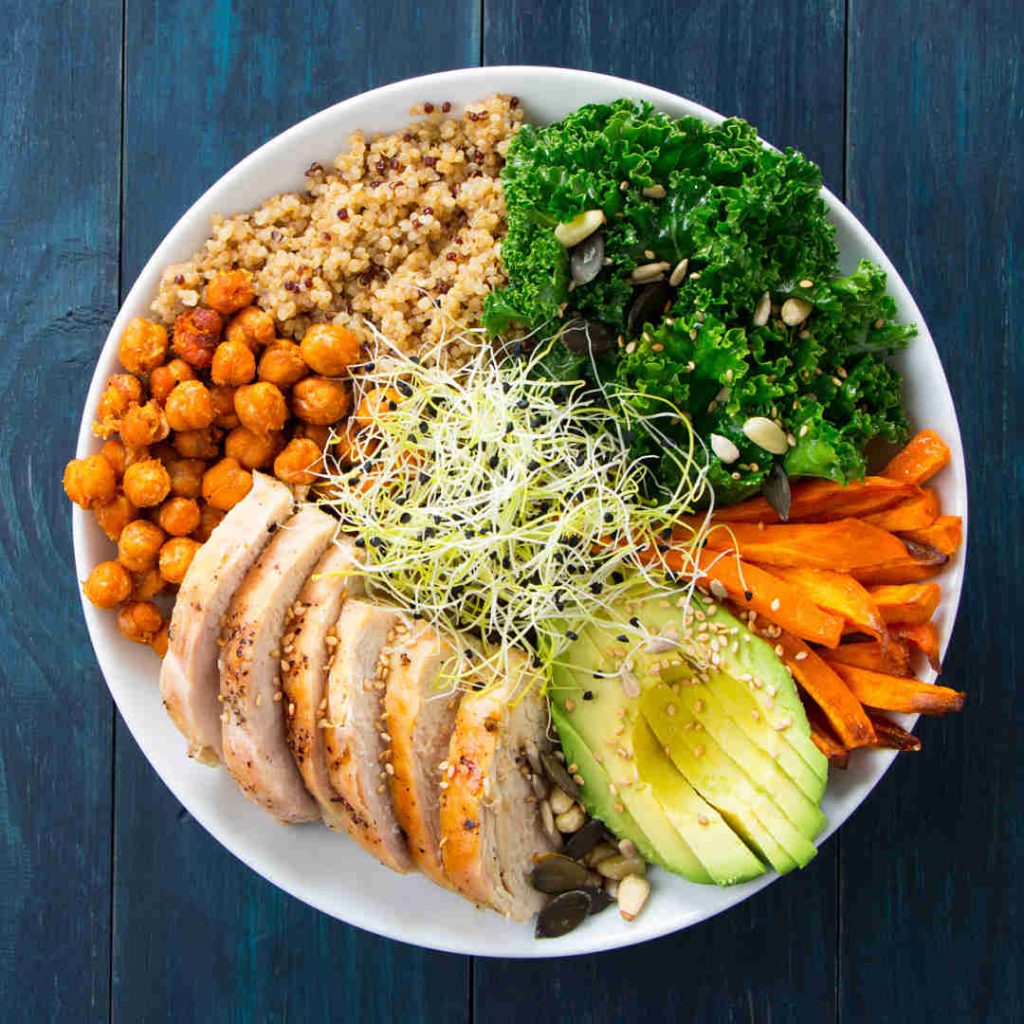
Ingredients
- Cooked quinoa 120 g
- Cooked chickpea pot 120 g
- Chicken breast 200 g
- Avocado 80 g
- Red sweet potato 150 g
- Kale 60 g
- Bean sprouts 20 g
- Sesame seeds 10 g
- Dried pumpkin seeds 10 g
- Olive oil 10 g
- Table salt 1 g
- Curry powder 1 g
- Saffron 1 g
Preparation
- Wash the kale
- Peel and slice the avocado
- Wash and drain the chickpeas. Sauté them with a little oil, salt, curry and saffron in a frying pan
- Season the chicken breast to taste. Pass it through the pan with a drop of oil, which is completely done
- Wash and cut the sweet potato into strips. Place it in the oven and cook it at 180ºC, until well done (10-15 minutes)
- Put a glass of cooked quinoa in the microwave for a minute
- Place all the ingredients in a large plate and add the bean sprouts, sesame seeds, pumpkin seeds, season with salt and oil
Indicators for a portion
Kcal: 1100
Proteins: 25% | Hydrates: 40% | Fat: 35%
